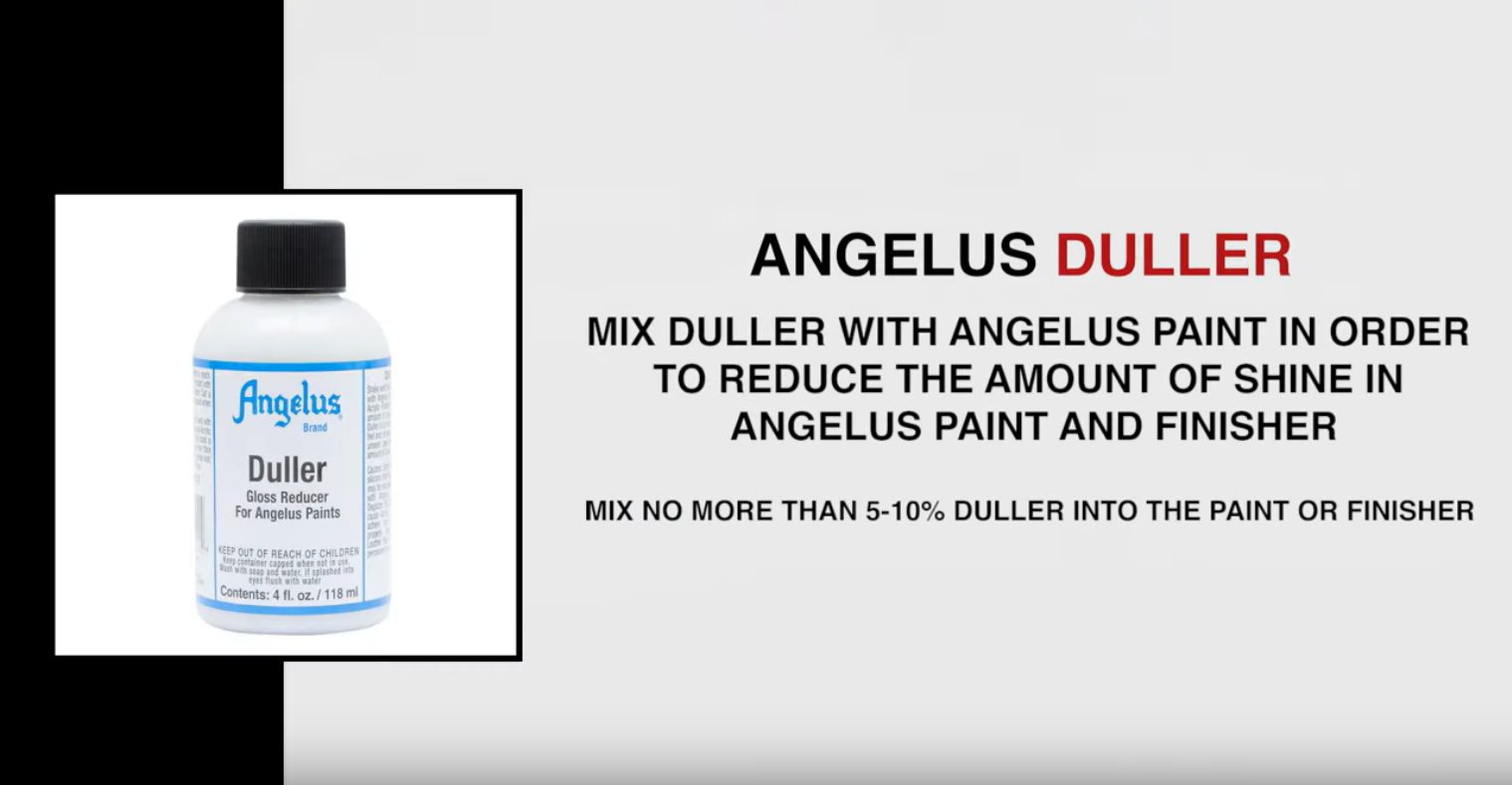If you use Angelus paints to create your customs, you might've noticed by now that they tend to leave a little bit of a shine once dry.
While this can be good for some designs, you might prefer more of a dull matte finish for some of your customs.

Fortunately, getting that smooth factory finish is pretty easy with a little bit of Angelus Duller.
To show you how to accomplish this, sponsored artist @DeJesuscustomfootwear stopped by to make a quick video to show you everything you need to know about using Angelus Duller on your custom shoes.
Painting With Duller vs. Without Duller
Using Angelus paint straight from the bottle works perfectly fine. All of our paints are ready to be applied to any common shoe material without needing to worry about cracking, peeling, or any other damage.
However, without using any duller or finishers, these paints can leave a glossy finish after drying. While there's nothing wrong with this, you might prefer a matte finish as you'd typically see on a pair of shoes straight from the factory.
Check out the difference below:

To get that factory finish, all you need to do is mix a little bit of Angelus Duller with your paint before applying it to the shoe.
The Right Ratio
While there's no magic ratio for mixing duller with paint, it's important not to overdo it.
If you add too much duller to your paint, you'll end up with a strange chalky finish rather than a matte factory finish as you can see below:

On top of this, too much duller will make your paint stiff and brittle, meaning your customs will be less flexible and more likely to wear down quickly.
To avoid this, we generally recommend that you mix 5% to 10% duller with Angelus paint for a matte/flat look.
Duller & Finishers
What do you do if you finish your custom paint job and decide you want more of a flat look instead of a glossy finish? Can you add duller after painting?
Unfortunately, no, duller is not a topcoat and won't do much if applied to a finished custom paint job. Instead, you can use duller mixed with an acrylic finisher for a matte finish.

Angelus acrylic finishers not only help adjust the finish of your shoe, but they can also help protect the paint from minor scratches and scrapes.
Note: We do not recommend adding more than 0.5 oz of duller to a 4 oz. bottle of finisher.
Best Time to Use Duller
Duller can be particularly important to use when working on softer materials like canvas, mesh, and primeknit.
Leather shoes, like Air Force 1s, tend to have a glossier look even before painting, so it's not as noticeable if your paint leaves a little bit of an unwanted sheen.
On the other hand, canvas shoes, like Vans, have a completely flat finish. Without using any duller, it becomes extremely obvious that they have a custom paint job.
To make sure your canvas, mesh, or primeknit shoes maintain that factory finish, you're going to want to mix some duller with your paint before you get started.
To see more great customs and tutorials, make sure to follow us on Instagram, and don't forget to check out our website to grab the materials you need for your next project.

